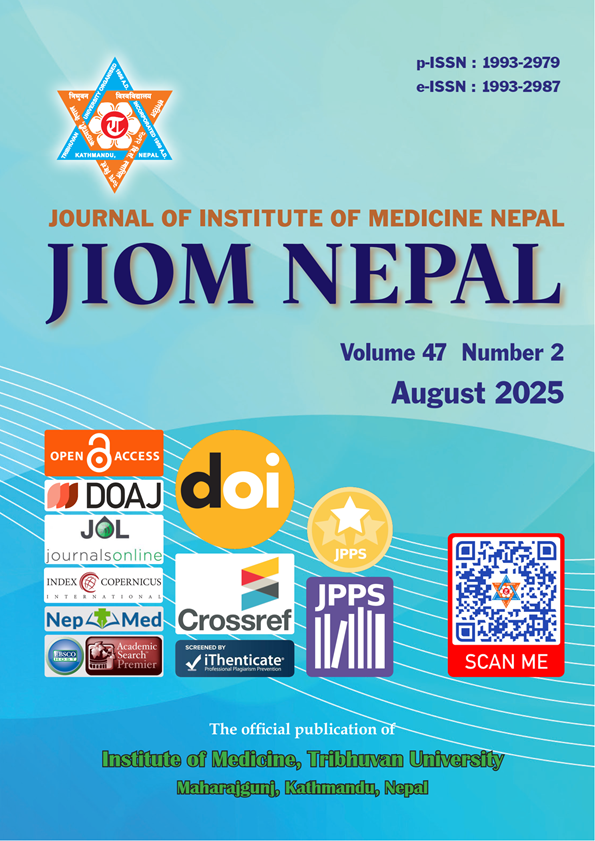Influence of Ureteric Orifice Configuration on Effective Insertion of Ureteral Access Sheath during Flexible Ureteroscopy
DOI:
https://doi.org/10.59779/jiomnepal.1392Keywords:
Ureteric access sheath, flexible ureterorenoscopy, uretric orifice configuration, virgin uretersAbstract
Introduction:
Retrograde Intrarenal surgeries are facilitated by the use of ureteral access sheaths (UAS) but it is not always possible to insert the sheath on the first attempt. The aim of the study was to determine the possible predictive factors enabling insertion of UAS during flexible ureteroscopy (fURS).
Methods:
All consecutive patients undergoing fURS/RIRS who were not pre-stented were studied and data collected. The study parameters were the demographics of the patients, characteristics of the stones, and perioperative data, including the ureteric orifice (UO) configuration over introductory guidewire. Multivariate logistic regression analysis was used to detect the possible predictors of successful UAS insertion.
Results:
In total, 78 patients who underwent primary fURS were included, with a mean age of 38.9±14.68 years and a male: female ratio of 2.25:1 with an average stone burden of 11.4 mm. There was successful primary insertion of UAS in 47(60.26%) patients. Out of them, 44 of the patients had rounded configuration of the ureteric orifice with a successful primary insertion of UAS in 17 (38%) patients whereas 30 (88%) patients had successful insertion in those with tented configuration of the ureteric orifice over a guidewire with a significant p value (<0.001). In multivariate regression analysis, a tent-shaped UO after guidewire insertion was the only significant predictor (OR:13.70 95% CI:3.76-50.10 with p-value<0.0001) for primary successful UAS insertion into virgin ureters.
Conclusions:
Patients with tent-shaped UOs after insertion of a guidewire are more likely to have an UAS insertion on the first attempt in a virgin ureter.
Published
Issue
Section
Categories
License
Copyright (c) 2025 Journal of Institute of Medicine Nepal

This work is licensed under a Creative Commons Attribution-NonCommercial 4.0 International License.















